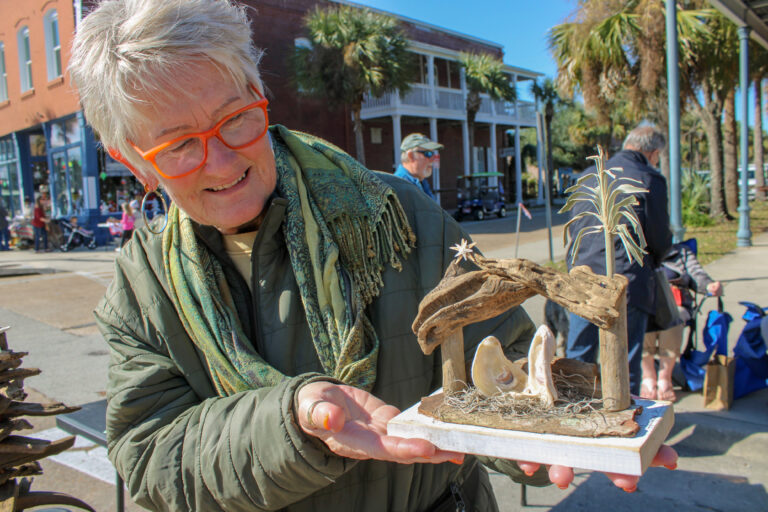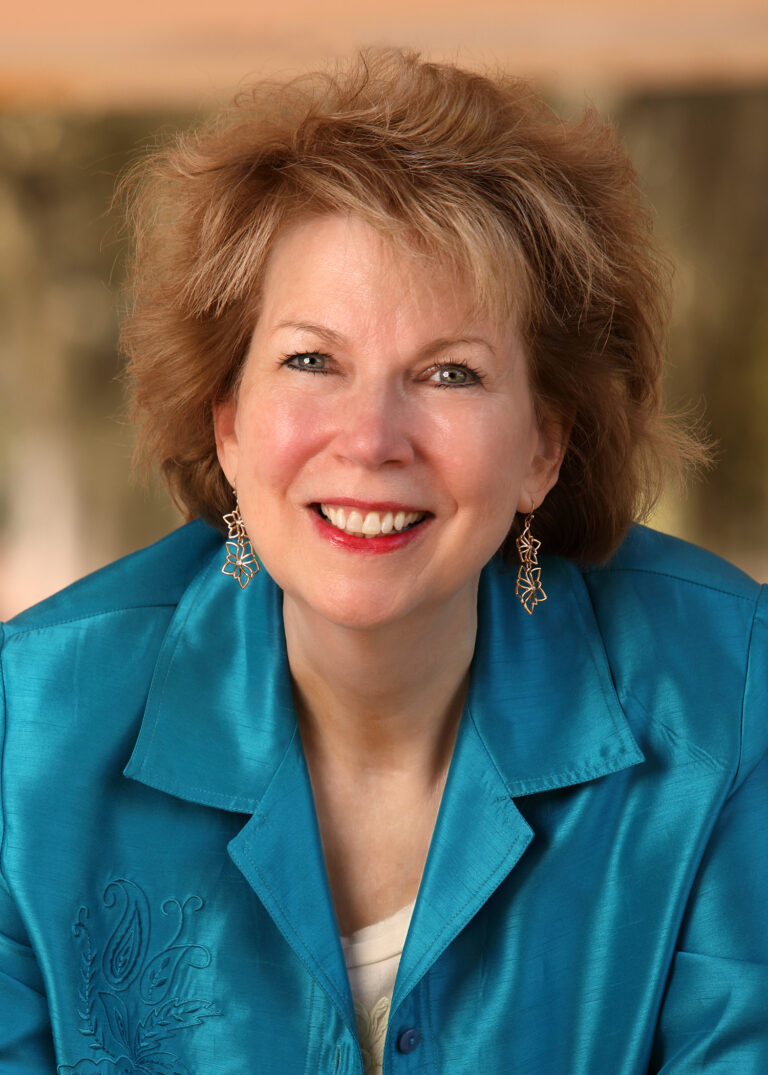Charles Mohr, Alvan Chapman and the ‘sleeping angel’
At the north end of Apalachicola’s Magnolia Cemetery on Bluff Road, the Mohr family plot lies in the shade of an old cedar tree. Tall weeds, fallen palm fronds and years of dirt obscure the gravestones while Spanish moss hanging from live oaks nearby adds to the air of age and neglect.
In the middle of the plot, rising about three feet above the ground, is a sweet lichen-covered statue of a little girl; she has angel wings on her back, a bouquet of flowers in one hand, and a single blossom in the other. At the angel’s feet is a flat stone that reads “Helen Dorothy Mohr, born July 23, 1899, died March 24, 1901. Only sleeping.” The poignancy of this memorial is captivating. Who was this child whose life ended before it really began?
She was the fourth child of Augustus Steven Mohr and his wife, Alice, both of whom lived in Apalachicola for more than 30 years at the turn of the last century. Augustus, born in 1860 in Mobile, Alabama, started out his adult life as a clerk in a Mobile lumber yard. By about 1890 he was employed as superintendent of the Cypress Lumber mill at Scipio Creek in Apalachicola.
In June 1892, he married Alice O’Connor (1863-1949) whose Irish parents were in Apalachicola in 1860, but moved to Key West just before she was born; her father, a stevedore, died a year after her birth due to a yellow fever epidemic. Soon after their marriage, Augustus and Alice contracted with brothers John and George Marshall to build an elegant Victorian home, now known as the Margaret Key house, fronting Lafayette Park.
Looking deeper into little Helen Mohr’s ancestry, we learn her father’s father was Charles T. Mohr, a German immigrant who made a name for himself as a chemist, pharmacist, pharmaceutical manufacturer, botanist and geologist. On its own, the story of his life is fascinating and worth reading about, but what makes it especially noteworthy is the connection between Charles Mohr and Apalachicola’s own Alvan W. Chapman (1808-1899).
Professor L. J. Davenport of Alabama’s Samford University has written that “Charles Mohr (1824-1901) was one of the foremost botanists of the southern United States during the late 19th century. His stature as an early Southern botanist is overshadowed only by that of A. W. Chapman,” who authored Flora of the Southern United States, the first – and lasting – comprehensive treatment of plants in the southeastern US published in 1860. Most interestingly, Mohr and Chapman not only knew and corresponded with each other, but Mohr even wrote a biographical sketch of Chapman.
Charles (Karl) Theodor Mohr was born just after Christmas, 1824 in Esslingen, Germany to Dorothea and August Mohr, a lamb farmer turned mustard-and-vinegar factory owner who died when Charles was only 9 years old. Early on, Charles developed a passion for botany, thanks to both a great uncle who was a forester and a local priest much taken with nature studies. Following the wishes of his mother, Charles studied chemistry, pharmacy and mineralogy in school, but pursued his botanical interests in the greenhouses of the imperial court garden where a friend served as an apprentice.
At age 21, Charles was invited on a plant-collecting trip to Surinam (Dutch Guiana), but dysentery and severe fever attacks sent him back to Germany less than a year later. He then worked as a chemist in Austria for a year before he and his brother, attracted by the comparative stability of the American government, decided in 1848 to emigrate to the US. They entered the country in New York and went to Cincinnati where Charles found work in a German chemical company.
Mohr marries, becomes a pharmacist
But when “gold fever” hit in 1849, he couldn’t resist and went with 50 other men to search for gold on the slopes of the Sierra Nevada. Standing in cold water all day worsened his already compromised health, so he went back east where he farmed for a short time in Indiana before going to Louisville, Kentucky where, in 1852, he married Sophia Rhoemer and became a pharmacist.
Five years later, Charles and Sophie went to Mexico for his health, but the Mexican Revolution soon forced them to leave. Settling in Mobile, he established a successful pharmaceutical and perfume business. During the Civil War, the building that housed his pharmacy was destroyed, but – undeterred – he rebuilt it; he also produced medicines and inspected drugs that had been imported (often smuggled) for the Confederate medical corps.
In the decades after the war, despite ongoing health issues, he continued work as a pharmacist in Mobile and pursued his avocation as a botanist, publishing nearly 100 articles on forests, mosses, plants introduced in ballast aboard ships from Europe, and medicinal plants which became part of his seminal work, Plant Life of Alabama. He also conducted topographical examinations of north Florida, reported on Alabama’s mineral resources, and – in the employ of Harvard University and the Department of Agriculture – traveled widely to lecture to horticultural societies and other large audiences.
As ambitious and dedicated to his work as Charles Mohr was, he was even more devoted to his family. The last of his five children was born in 1864, and in 1869 he wrote to a colleague that he dearly loved his adopted country and was “striving hard to bring up for its benefit three sons and two daughters as good and useful children of this country of their birth,” a task he viewed “as the prime object of his life.” A long-time colleague described him as “the most loveable and unselfish of men.”
Mohr and Chapman seem not to have known each other until their last decades. One source says they met in Washington DC, but it is tempting to think their friendship had more than a little to do with the fact that both Mohr’s son, Augustus, and Chapman lived in Apalachicola at the same time. As prominent and well-respected members of the community, they must at least have been acquaintances.
Charles Mohr and Chapman exchanged letters about the minutia of certain specimens in their collective attempt to identify new or undocumented species, and when Chapman died in 1899, Mohr wrote a long and personalized account of the great botanist. Mohr told, with much admiration, of the time in 1892 when Chapman, presenting Mohr with a lovely and rare orchid, dictated the following note to be made on the orchid’s label: “Collected by A.W. Chapman, walking thirteen miles for this plant, in his eighty-third year.”
On a later occasion, the two men, aged 75 and 85, boarded a small skiff and traveled “many miles up the Apalachicola River in search of an obscure ash which he [Chapman] observed thirty years before, but had not encountered afterwards.” And, only one year before Chapman’s death, the two men made the same trip in a tow boat with Mohr noting that “during the whole day, spent in the almost inaccessible palmetto and cypress swamps, our aged companion showed the alacrity of the botanical collector in the best years of his life.”
Chapman died in Apalachicola on April 6, 1899, and Mohr noted in his sketch of his colleague that on the day of his funeral “all the industrial establishments and most of the places of business in Apalachicola were closed to give everyone a chance of paying the last honor to the departed.” This observation indicates Mohr was either present for Chapman’s burial or that Mohr’s son, August, passed this detail on to him.
Before his death, Chapman sold a large amount of the plant material he had collected to the Biltmore Herbarium in Asheville, Carolina. Oddly, or perhaps intentionally, it was there that Charles Mohr, once again in failing health, spent the final years of his life. He died on July 17, 1901 – four months after the death of his baby granddaughter, Helen Dorothy, and a mere two weeks before the publication of his Plant Life of Alabama to which he had devoted more than 40 years of work. Mohr is buried in Asheville’s Riverside Cemetery.
Practical considerations may have precluded Helen Dorothy’s accomplished grandfather from being buried in the family plot at Magnolia Cemetery. The little girl’s touching memorial stood all alone for four long decades until her parents, who died in Lakeland, joined her in the 1940s. The names and dates on other stones in the plot reveal she is now surrounded by kin, a comfort no doubt to she who is “only sleeping.” Although Helen Dorothy’s life was snuffed out too early, her monument stands forever as a solid link to two of the greatest botanists in the South.
Pam Richardson, vice president of the Apalachicola Area Historical Society, can be reached at stoneoak2003@yahoo.com



Meet the Editor
David Adlerstein, The Apalachicola Times’ digital editor, started with the news outlet in January 2002 as a reporter.
Prior to then, David Adlerstein began as a newspaperman with a small Boston weekly, after graduating magna cum laude from Brandeis University in Waltham, Massachusetts. He later edited the weekly Bellville Times, and as business reporter for the daily Marion Star, both not far from his hometown of Columbus, Ohio.
In 1995, he moved to South Florida, and worked as a business reporter and editor of Medical Business newspaper. In Jan. 2002, he began with the Apalachicola Times, first as reporter and later as editor, and in Oct. 2020, also began editing the Port St. Joe Star.